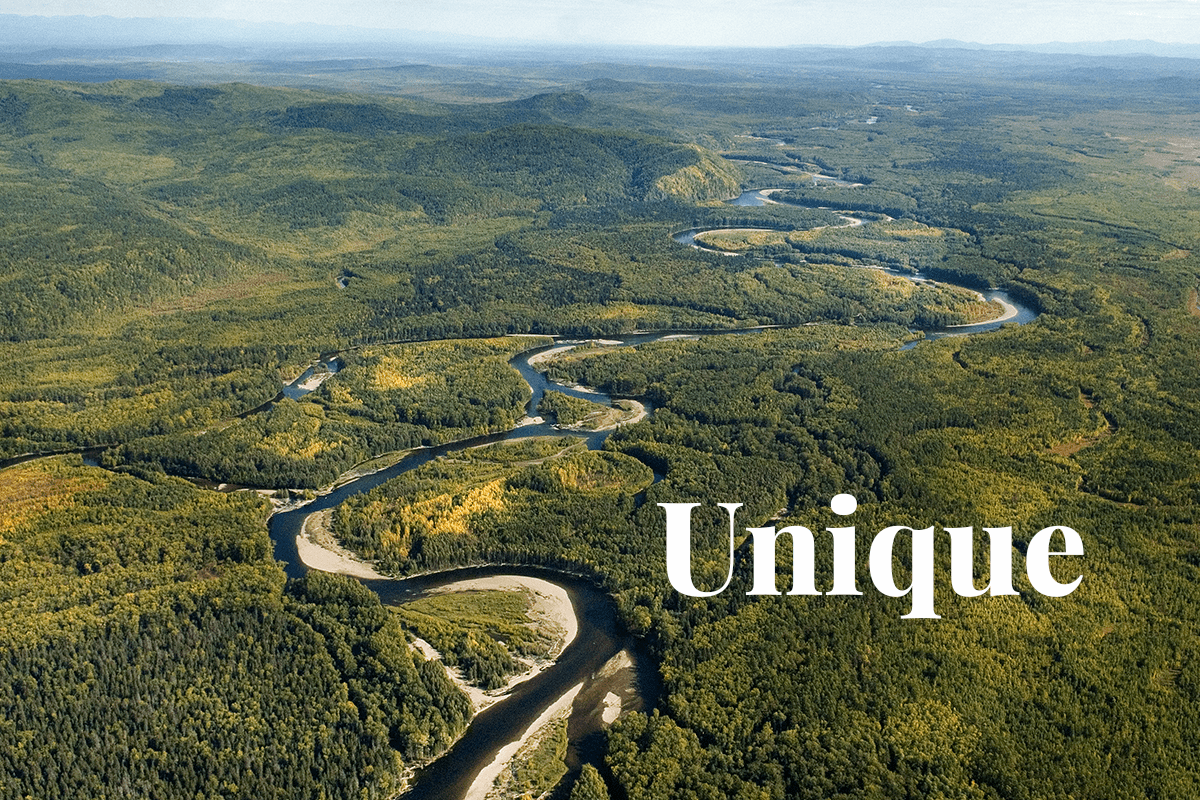Boreal forests, also known as taiga, are among the largest terrestrial biomes, stretching across the northern regions of North America, Europe, and Asia. 27% of all forested areas on our planet are considered boreal forests. They are characterised by cold winters, short growing seasons, and abundant coniferous trees such as spruce, pine, and fir. Boreal forests are critical in the global carbon cycle and are home to various wildlife.
 Far east taiga views from helicopter.
Far east taiga views from helicopter.
How do boreal forest soil and climate affect trees?
Boreal forests are primarily found in high latitudes and altitudes, where the climate is cold and the growing season is short. In North America, boreal forests extend from Alaska across Canada to the northeastern United States, while in Europe and Asia, they stretch across Russia and Scandinavia. The temperature ranges from -40°C to 20°C, with an annual precipitation of 40–100 cm.
The soil in boreal forests is typically thin and nutrient-poor. Boreal forests are also characterised by permafrost, which is a layer of frozen ground that persists throughout the year. This limits the depth to which roots can penetrate and affects plants' water and nutrient uptake.
However, trees and plants in boreal forests have evolved to thrive in the nutrient-deficient soils of the region by developing shallow root systems. Shorter roots help rapidly absorb water and nutrients during the short growing season. To access the nutrient-rich topsoil layer with the most organic matter, these plants grow a dense network of fine roots just below the soil surface, enabling them to effectively extract nutrients, boost growth, and enhance survival in the harsh environment.
Furthermore, many boreal forest plants establish symbiotic associations with fungi that aid in obtaining nutrients like nitrogen and phosphorus from the soil.
What kind of species are found in boreal forests?
Boreal forests are dominated by coniferous trees, which are adapted to the cold climate. The most common species include spruce, pine, fir, and larch. These trees are well-suited to the harsh winters and short growing seasons. They can also grow very tall. The understory of boreal forests is usually composed of shrubs, mosses, and lichens.
Boreal forests are home to a wide variety of wildlife, including mammals such as bears, wolves, moose, and caribou. Many of these animals have adapted to the cold climate by growing thick fur or changing their behaviour. For example, some animals hibernate during the winter, while others migrate to warmer areas. Birds are also common in boreal forests, with species like owls, hawks, and woodpeckers.

Read more: 8 facts about tropical forests
Why are boreal forests important?
Boreal forests play a critical role in the global carbon cycle. They store more carbon than any other terrestrial ecosystem, with an estimated 30–40% of the world's total land-based carbon stored in boreal forests. This carbon is stored in boreal forest trees, soil, and peatlands.
Boreal forests are also vital for the conservation of biodiversity. They provide habitat for a wide variety of species, including many that are threatened or endangered. In addition, boreal forests are important for indigenous communities, who rely on the forests for their livelihoods and cultural practices.
Like other types of forests that play a key role in many vital natural processes, boreal forests are vital for carbon sequestration and biodiversity conservation. They are also important for indigenous communities. However, boreal forests are threatened by deforestation, habitat destruction, and pollution from activities such as logging, oil and gas development, and wildfires.
At DGB Group, we firmly believe that proactively addressing deforestation is the best way to protect and restore nature. Therefore, we specialise in nature-based solutions that reforest our planet at scale. You or your business can join our efforts to make our planet greener.
Get in touch with our experts to find out all the details




